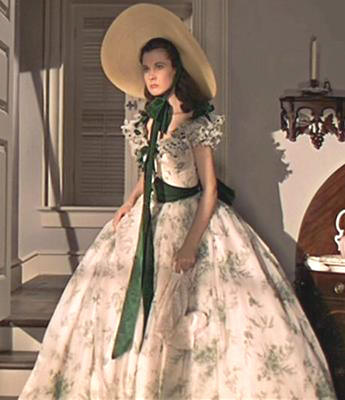As part of my winter school course a uni (Fashion and Film) we need to keep a blog charting our impressions of and ideas inspired by the lectures and tutorials.
Our first day was mainly a discussion of what the course will be about and encouragement to begin working out what we want to write our essays about. One part of the tutorial I found particularly intriguing was a chart drawn up breaking down a way to analyse the use of a particular costume in film (or I suppose in a stage production or on TV).
I found it fairly amusing that the list under Spectacle is one of the first things we learnt in First Year fashion design, though thinking about it that makes sense as like costume designers we are aiming to create a persona. The difference being only that our specific goal is to use this fantasy to sell our garments, and the costumers is to further the narrative of the story.
This is looked at in some depth in our first reading (Screen Style - Sarah Berry) which discusses the development of star style in the 1930s. With the advent of ready-to-wear clothes female movie stars were used as "types of women" to break up the huge variety of clothing now available in to more easily saleable groupings. Having this based on actual people who would continue to be in more movies wearing different garments added an obsolescence to the garments, for soon one would have to buy the next new garment to continue to be like that star. This of course continues today in pretty much every fashion magazine around.
For my essay I've had 3 different ideas: the simplest stems from my fascination with the 90s fashion style portrayed in Clueless and how the films release marked a shift in youth style from the grunge of the early 90s to a more preppy look. I do fear that this is a bit too simple and doesn't allow for enough analysis to fill a 2500 essay.
The second is to look at Bruce Willis in films like Die Hard and the Fifth Element as an archetypal man, the smart-arse tough guy and how that is added to through his look and how that is fairly standard in most of his action movies and how this would influence the fashion look for the more masculine male. However, much as I love Bruce Willis action movies, I don't find myself passionate enough about mens' fashion (especially more masculine fashion) to sustain me through writing an essay about him.
My third idea is to look at the Japanese manga, anime, film Nana and it's two different types of girls as shown by the two Nanas. Particularly Ai Yazawa's use of Vivienne Westwood fashion for the punk-rock Nana and how this could perhaps have brought greater awareness of the brand to a new group of girls, ones attracted by the more girly Nana. I also found that the controlled Star system in Japan reminded me a lot of the Star system of classic Hollywood. I am worried that I might be taking on too much with this topic and that I might find it fairly hard to find academic texts to reference.
Each day after our tutorial we return to the lecture room to watch a film, preceded by some discussion of the context and relevance of it. Our first film was almost half of Gone with the Wind (it's 4 hours long and only is allowed out of the UTS library on a 2hr loan). The two most memorable and striking gowns in this film are both green, the first from the big BBQ and the second I haven't seen but have been told is made from curtains.
Our lecturer Professor Pamela Gibson mentioned that their is a long history of iconic green dresses in movies and this got me thinking about some examples I remember from my short film viewing lifespan.
Anyone care to guess where the following examples are from?






No comments:
Post a Comment